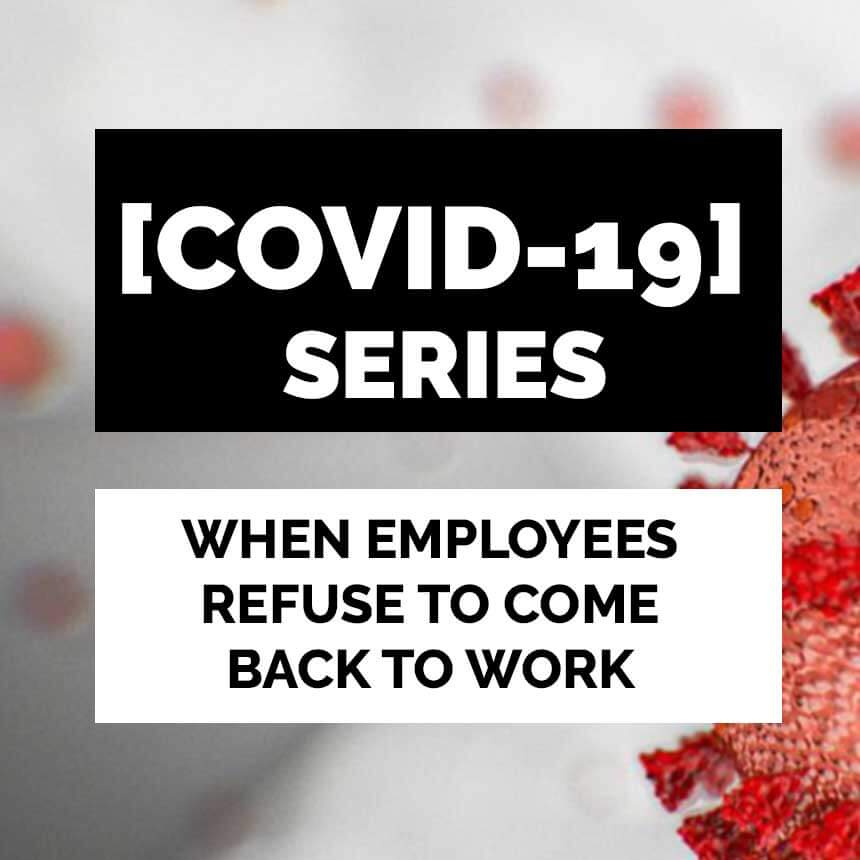You may have read our recent post on What to Do With Employees During COVID-19 Crisis where we address questions around using PPP funds for employees, what to do with unemployment claims & how to manage employees during this crisis. If you haven’t read it yet, we recommend doing so first!
However, since posting, we’ve had many clients repeatedly ask about two specific scenarios:
1) Workers who wish to work at a reduced pay rate or for free in order to continue collecting unemployment benefits
2) Workers who refuse to return to work.
Here, we’re going to answer both.
Workers Who Wish To Work At $0 / Hr
Some workers are asking to work for free or at reduced rate so as not to ruin their unemployment benefits which are often more lucrative than their normal pay rates due to the $600 additional weekly pay from the federal government.
Our recommendation is that no one can work at a $0 pay rate. Workers are required to be paid a fair rate. If everyone’s pay is reduced across the board then that individual’s pay can be reduced as well. Workers cannot forgo pay. It is illegal and should not be permitted.
See this article about a federal court case about a restaurant buffet that had volunteer workers. The employer was ordered to pay back hundreds of thousands of back wages for not paying those volunteers: https://www.dol.gov/newsroom/
If they are working, they need to be paid. We cannot do $0 pay rates. They cannot ‘volunteer’ time to teach or work.
Workers Who Wish To Work at Reduced Pay
If the worker is working in a reduced capacity during the unemployment period then they are considered partially employed. Let’s say they collect $250 from state unemployment and then they teach 2 yoga classes and get $50/class or $100 in total. Generally speaking, this would be a dollar for dollar reduction against unemployment. So from the $250 they earned from state unemployment, this would then be reduced by $100. The employee and the employer are required to report these earnings to the state each pay period or every two weeks depending on your state. They would either owe this money back to unemployment or it would be a reduction in their next unemployment payment.

Workers Who Refuse To Return To Work
If workers are offered work and they turn down work then they are purportedly not eligible for unemployment. They have refused to work. The workers will have to sort it out with the state and with their employer whether they can still collect unemployment. For employers who are sensitive and understanding to employees who choose not to return to work for safety reasons we want to provide you with these three options:
1) You are permitted to continue paying them while they stay home using PPP funds, EIDL funds, or monies of your own. Though this is tough on your wallet.
2) Employees staying home due to being sick, caring for someone who is sick from COVID19 or is caring for his or her child whose school or place of care is closed (or child care provider is unavailable) due to COVID-19 may be eligible to collect 2/3rd of their pay which you, the employer, will then be entirely reimbursed by the government.
- · More can be found here at the Department of Labor
- · Families First Corona Virus Response Act FAQ
- · Employers are required to send this notice to all employees and post at the place of business.
- · Investopedia: What is the families First Corona Virus Response Act
3) You have to option to:
- · Actually terminate the employee (and presumably bring them back when they feel safe though I would not put this in writing anywhere, ever.)
- · Not fill out the unemployment form entirely
- · Say work is still not available
You should consult with a labor attorney as we’re not suggesting these approaches are legal or ethical, however as employers, we empathize with our employee’s position. We want them to feel safe too.
As corny as this sounds: for many of us, employees are family. Many states have mandated employers respond and respond accurately to each unemployment notice.
We’re not sure what the result of this will be for employers who fail to complete the unemployment notice or complete it inaccurately or if the state will come asking questions. But it’s an option, even though an ethically questionable one.
State’s will be hard-pressed to follow up on every one of the 30 million employees who have been laid off. If options 1 & 2 weren’t available to my employees, I would choose to officially terminate them but it’s up to you. Reason for termination: position eliminated or worker replaced. It’s important to understand what terminating an employee means to your future taxes. You can read more about that here.
Still have questions?
If you have any concerns or questions you can:
1) Contact us and our team.
2) Contact a labor attorney.
3) Contact your state unemployment office.
We recommend staying away from Google and internet searches which tend to be filled with bad advice. If you have a question, even if you’re not our client, just email me [email protected] or use our contact us page and I’ll respond in 24-48 hours.
We understand this is a confusing time for many, and my team and I are here to help along the way. We suggest checking out all of our COVID-19 Resources or catching up on our YouTube channel here:
- It’s Not Too Late, Hurry and Get Thousands PPP and EIDL $$$
- COVID19 Series Q&A: Government Bailouts, PPP & EIDL
- A Gym Owner’s Guide to Rent Abatement
Additionally, you can sign up for all of our future updates & articles here.
Until next time, hang in there.
- How To Build & Expand Your Fitness Network - June 30, 2024
- Hidden costs and risks of mixing business and personal expenses - June 16, 2024
- Employee Retention Credit 101: A Complete ERC Guide for Tennis Clubs & Racquetball Clubs - March 11, 2024


